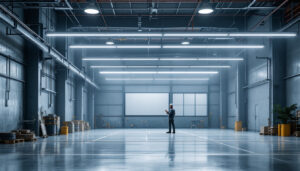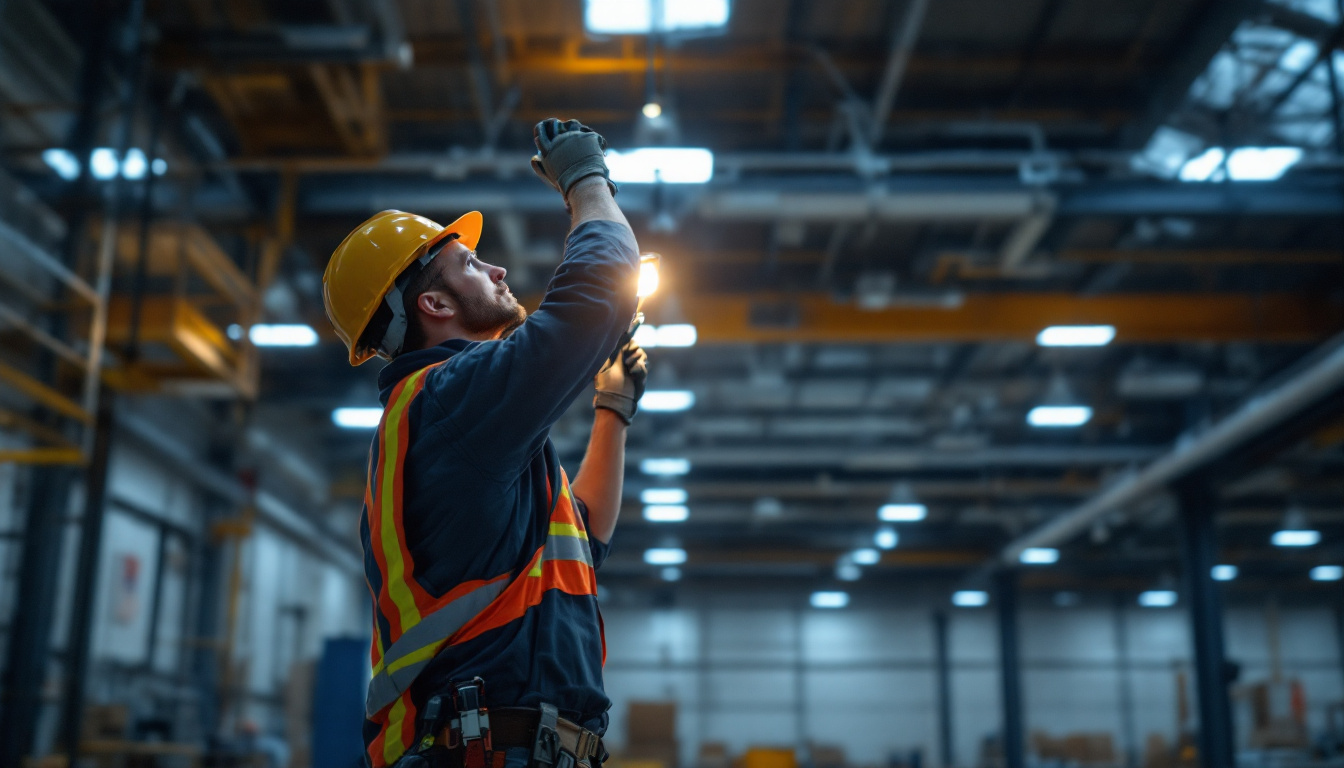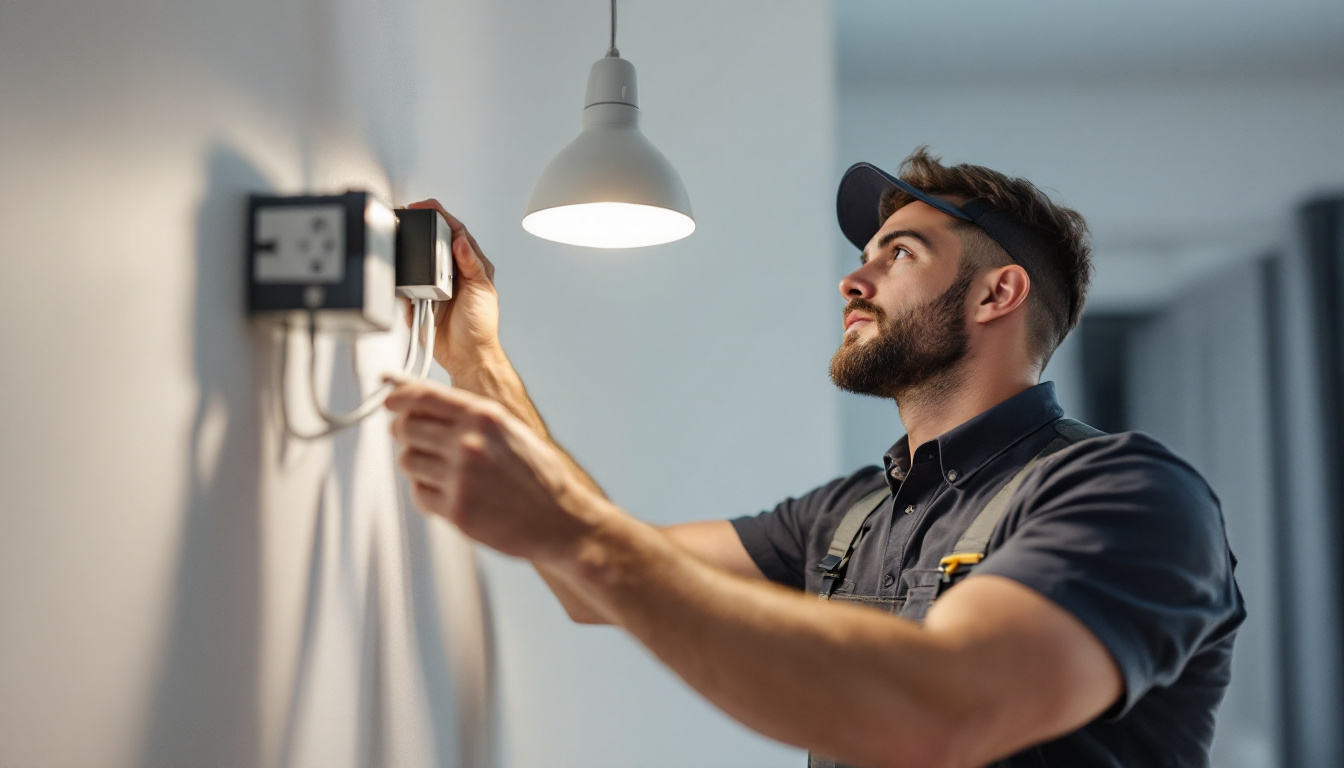

When it comes to creating the perfect ambiance in a hair salon, lighting plays a crucial role. For lighting contractors, understanding the nuances of bulb brightness and how it affects both the functionality and aesthetics of a salon is essential. This article delves into the intricacies of hair salon lighting, providing valuable insights and tips to help contractors deliver exceptional results.
Lighting in a hair salon does more than just illuminate the space; it sets the mood, enhances the client experience, and ensures that stylists can perform their work effectively. The right lighting can make a significant difference in how colors appear, how textures are perceived, and how clients feel during their visit.
The ambiance of a salon can be influenced dramatically by the type and brightness of the lighting used. Soft, warm lights can create a cozy and inviting atmosphere, while brighter, cooler lights can evoke a more energetic and modern feel. Lighting contractors must consider the salon’s brand and target clientele when selecting the appropriate brightness levels. Moreover, the strategic placement of lighting fixtures can enhance the overall aesthetic of the salon, highlighting design elements such as artwork or unique furniture pieces. Incorporating dimmable lights can also allow for flexibility, enabling the salon to transition from a vibrant daytime environment to a more relaxed evening setting, catering to different client moods and preferences.
For hair professionals, accurate color representation is vital. Poor lighting can lead to misjudgments in color selection and application. Using bulbs with a high Color Rendering Index (CRI) is essential, as they provide a more accurate representation of colors. This ensures that clients leave satisfied with their hair color, reducing the chances of costly corrections. Additionally, the use of natural light, when possible, can further enhance color accuracy, as it provides the most authentic representation of hues. Many salons are now incorporating large windows or skylights to maximize natural light, creating an inviting atmosphere while also allowing stylists to assess color in the best possible conditions.
Stylists require adequate lighting to perform their tasks effectively. Bright, focused lighting at styling stations is necessary for precision work, such as cutting and coloring hair. Lighting contractors should consider adjustable fixtures that allow stylists to control brightness levels according to their needs, promoting efficiency and comfort. Furthermore, task lighting can be complemented by ambient lighting to create a balanced environment that reduces eye strain during long hours of work. Incorporating LED lights not only provides energy efficiency but also longevity, ensuring that the salon maintains a well-lit atmosphere without frequent bulb replacements. The thoughtful integration of lighting design can ultimately enhance the workflow of stylists, allowing them to focus on their craft and provide exceptional service to their clients.
There are several types of lighting that can be effectively utilized in a hair salon. Each type serves a specific purpose and can contribute to the overall aesthetic and functionality of the space.
Ambient lighting provides the general illumination of a salon. It sets the overall tone and ensures that the space is well-lit. Common sources of ambient lighting include ceiling-mounted fixtures, chandeliers, and recessed lighting. When selecting ambient lighting, it’s important to consider the brightness level and how it complements the salon’s decor. For instance, warm-toned lights can create a cozy and inviting atmosphere, while cooler tones can evoke a modern and sleek feel. Additionally, dimmable options allow for flexibility, enabling the salon to adjust the lighting based on the time of day or the mood they wish to create, enhancing the overall client experience.
Task lighting is essential for areas where precision work is performed, such as styling stations and wash basins. This type of lighting should be bright and focused, allowing stylists to see details clearly. Wall-mounted sconces or adjustable LED fixtures can provide effective task lighting that enhances visibility without creating harsh shadows. Moreover, incorporating natural light through strategically placed windows or skylights can significantly improve the quality of task lighting, as it allows stylists to work with the most accurate color representation. This is particularly important when clients are choosing hair colors or styles, as natural light can reveal subtleties that artificial lighting may obscure.
Accent lighting adds depth and character to the salon. It can highlight specific areas, such as product displays or artwork, creating visual interest. Using LED strips or spotlights can effectively draw attention to these features, enhancing the overall design of the salon while maintaining a cohesive look. Additionally, accent lighting can be used to create focal points within the salon, such as illuminating a feature wall or a unique styling chair, which can serve as a conversation starter for clients. Utilizing colored lights or changing the intensity of accent lighting can also help in creating a dynamic atmosphere that evolves throughout the day, making the salon feel fresh and engaging at all times.
Selecting the right bulbs is crucial for achieving the desired brightness and ambiance in a hair salon. Various factors should be considered, including the type of bulb, wattage, and color temperature.
LED bulbs have become the preferred choice for many lighting contractors due to their energy efficiency and longevity. They produce less heat and have a longer lifespan compared to incandescent bulbs. Additionally, LED bulbs are available in a variety of color temperatures, allowing for greater flexibility in design. While incandescent bulbs may provide a warm glow, they are less efficient and can lead to higher energy costs over time.
Wattage directly influences the brightness of the bulbs. However, it’s essential to balance brightness with the overall ambiance of the salon. Too much brightness can create an unwelcoming environment, while too little can hinder functionality. Conducting a lighting plan that considers the size of the space and the desired effect will help determine the appropriate wattage for each area.
Color temperature is measured in Kelvin (K) and affects how light appears in a space. For hair salons, a color temperature between 3000K and 4000K is often ideal. This range provides a warm to neutral light that is flattering to skin tones and hair colors. Lighting contractors should consider the specific needs of each area within the salon when selecting color temperatures, ensuring that the lighting complements the services offered.
A well-thought-out lighting layout is essential for maximizing the effectiveness of the lighting in a hair salon. A thoughtful design will enhance the functionality of the space while creating an inviting atmosphere.
Dividing the salon into distinct zones can help manage lighting more effectively. For instance, the reception area may benefit from softer, ambient lighting to create a welcoming environment, while styling stations require brighter task lighting. By creating zones, lighting contractors can tailor the brightness and type of lighting to meet the specific needs of each area.
Dimmers are an excellent addition to salon lighting, allowing for flexibility in brightness levels. This feature enables stylists to adjust the lighting according to the time of day or the specific service being performed. For example, a relaxing hair wash may benefit from softer lighting, while a precision haircut may require brighter illumination. Incorporating dimmers can enhance the overall client experience and promote energy savings.
Natural light can significantly enhance the ambiance of a salon. When possible, lighting contractors should design the layout to maximize the use of windows and skylights. Natural light not only provides a flattering illumination but also contributes to a more pleasant working environment for both staff and clients. However, it’s essential to balance natural light with artificial lighting to ensure consistency throughout the day.
Once the lighting system is installed, ongoing maintenance is crucial to ensure optimal performance. Regular checks and updates can prevent issues that may affect the salon’s ambiance and functionality.
Bulbs have a finite lifespan, and regular replacement is necessary to maintain consistent brightness levels. Lighting contractors should establish a schedule for bulb replacement to prevent dim or flickering lights that can detract from the client experience. Keeping track of the hours each bulb has been in use can help determine when replacements are needed.
Dust and grime can accumulate on light fixtures, diminishing their brightness and effectiveness. Regular cleaning of fixtures will ensure that the light output remains at optimal levels. This maintenance task can be easily integrated into the salon’s routine to keep the environment looking fresh and inviting.
As lighting technology continues to evolve, staying updated on the latest advancements can provide significant benefits. Upgrading to newer, more efficient lighting systems can enhance energy savings and improve the overall quality of light in the salon. Lighting contractors should remain informed about emerging technologies and consider recommending upgrades to salon owners when appropriate.
Mastering the art of lighting in hair salons is a multifaceted challenge that requires an understanding of both technical and aesthetic elements. By considering the importance of lighting, selecting the right bulbs, designing an effective layout, and maintaining the systems, lighting contractors can create an environment that enhances the client experience while meeting the functional needs of stylists.
With the right approach, lighting can transform a hair salon into a welcoming haven where clients feel pampered and stylists can work efficiently. By applying these tips and insights, lighting contractors can elevate their projects and contribute to the success of hair salons, ultimately leading to satisfied clients and thriving businesses.
Ready to elevate your hair salon lighting projects to new heights? At LumenWholesale, we provide lighting contractors with the finest selection of spec-grade lighting products at unbeatable wholesale prices. Say goodbye to local distributor markups and hello to our premium, high-performance lighting solutions that meet the highest industry standards. With free shipping on bulk orders, you can ensure your salon spaces shine with the best value in lighting—quality, affordability, and convenience in one package. Don’t compromise on your lighting needs; visit LumenWholesale today for Wholesale Lighting at the Best Value and transform your salon lighting projects effortlessly.

Discover how LED high bay fixtures can revolutionize your lighting projects and elevate your business.

Discover why Leviton Manufacturing is a game-changer for lighting contractors.

Discover the essential insights every lighting contractor needs to know about fluorescent lighting.

Discover why purchasing electrical tools in bulk from local distributors might not be the best choice.
Get notified when NEW deals are released.
Optimize your budget with wholesale discounts.
Only top-quality, specification-grade lighting products.
No additional costs at checkout - what you see is what you pay.
We understand the unique needs of contractors.